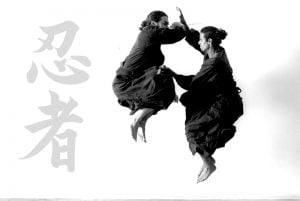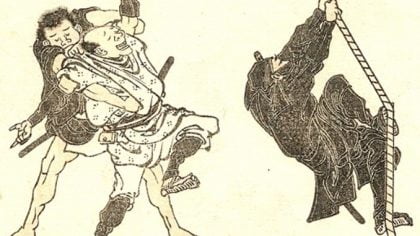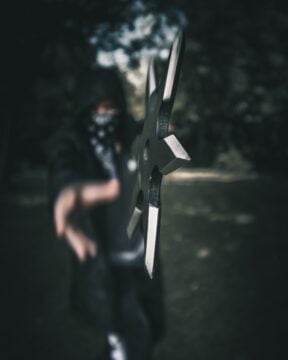The ancient ninja were steeped in esoteric Buddhist beliefs, the core of Japanese mysticism and spirituality. The kuji-in was a series of hand signs used to summon a ninja’s state of mind in order to complete their missions successfully.
Another form of mysticism prevalent in the ninja traditions is the Ketsuin. It was said to be a method created by the Yamabushi (mountain hermits/wise-men). Similar to Kuji-in, the Ketsuin was used to increase a ninja’s concentration and abilities prior to their missions.

The method involves the use of 9 characters: 1. (Rin), 2. (Pyo), 3. (Tou), 4. (Sya), 5. (Kai), 6. (Jin), 7. (Retsu), 8. (Zai), 9. (Zen). The ninja would first say ‘Rin’ and move his finger like a sword from left to right. Next, he would say ‘Pyo’ and move the finger from top to bottom again like a sword. All the other characters would be repeated in the same way as illustrated in the above chart.
Qi-Gong and Kuji-In: A Practical Guide to An Oriental Esoteric Experience
Both the methods of Kuji-in and Ketsuin were used by ancient ninja to draw out a mental state appropriate for succeeding their missions. Whether it was courage, focus or enhancing their abilities, they were able to use these methods. However, are these methods based off superstition, or can we as modern ninja understand how these methods work. And will we be able to use the principles behind these methods to achieve any state of mind that would be useful in our daily lives?
In the next article, we shall explore the modern equivalent of Kuji-in and Ketsuin.
Logen L.





